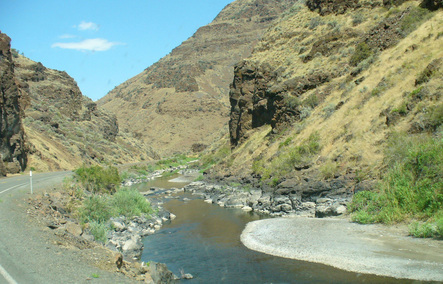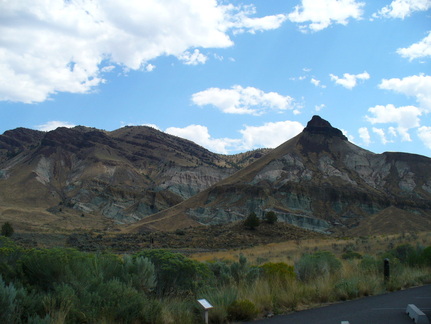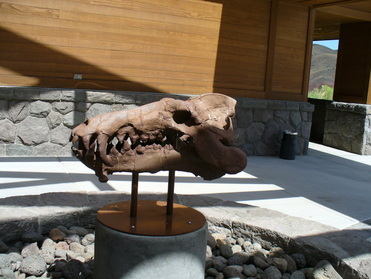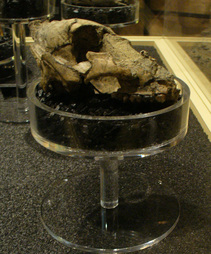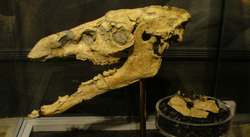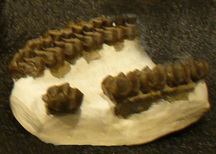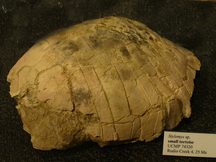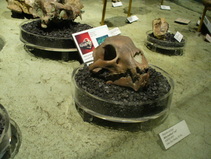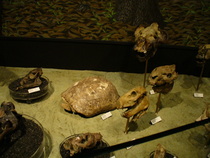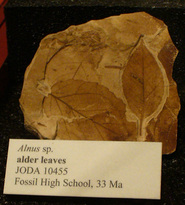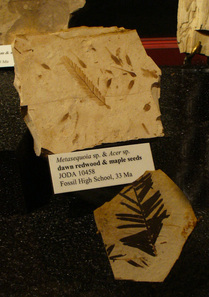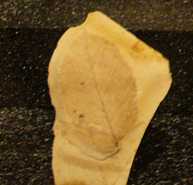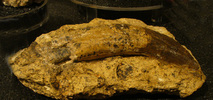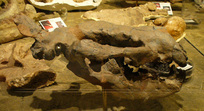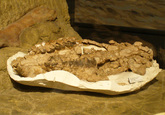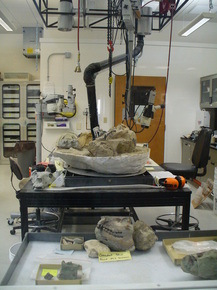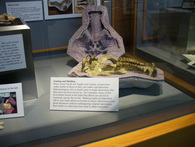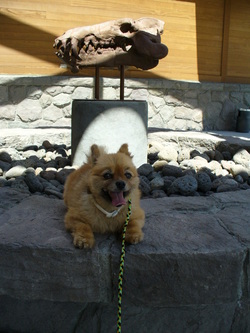John Day Fossil Beds National Monument
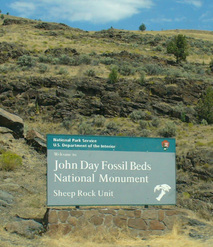
John Day Fossil Beds National Monument, established in 1975, covers 14,000 acres divided into 3 seperate sections or units. We only had time to visit one of the units, the Sheep Rock Unit.
In the picuture below you may be able to see the red, green, and pink layered color variations of the John Day formation.
The John Day fossils are so plentiful and varied that scientists have been able to identify 8 different ancient ecosystems. The visitor center here has information and displays on each of the ecosystems or assemblages. They are as follows . . .
Rattlesnake Assemblage -
7 million years ago
This was a time of great upheaval in Oregon. Animals similar to todays horses, bears, deer, dogs, pigs, and cats suddenly found their lives changed by a violent volcanic eruption. Superheated ash and gases covered a 13,000 square mile of the once cool, semi-arid climate of Oregon that was their home.
7 million years ago
This was a time of great upheaval in Oregon. Animals similar to todays horses, bears, deer, dogs, pigs, and cats suddenly found their lives changed by a violent volcanic eruption. Superheated ash and gases covered a 13,000 square mile of the once cool, semi-arid climate of Oregon that was their home.
There is also a display that tells all about what goes in to preserving a fossil - how it is stabilized with a special glue to keep it from crumbling, how the excess stony material is removed without damaging the fossil, and how molds are created so scientests can study them without actually handling or having access to the origional fossil.
Mom tried to trick me and told me there were big dinosaurs here that
would try and eat me, but she didn't fool me . . . I ain't scared of no fossils.
This big guy didn't hurt me a bit!
would try and eat me, but she didn't fool me . . . I ain't scared of no fossils.
This big guy didn't hurt me a bit!
Oregon Links

